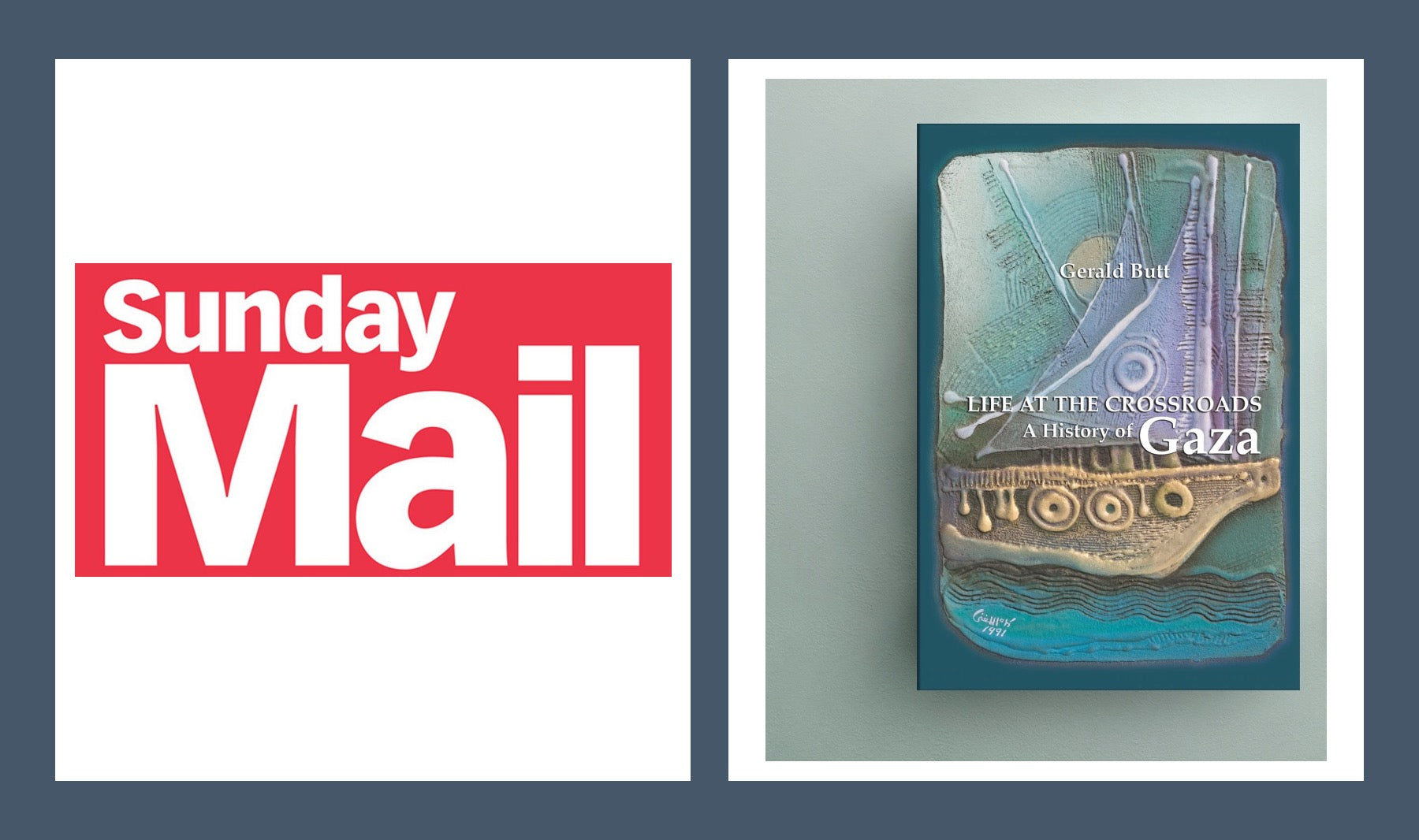
SUNDAY MAIL
Where the Average Age is 17
The Gaza Strip could so easily have been seen here, had it not been for one simple difference between Cyprus and Palestine: nobody other than Turkey gave them the right to invade Cyprus.
Israel was formed following World War II when the British withdrew from their mandate of Palestine and the UN partitioned the area into Arab and Jewish states (an arrangement rejected by the Arabs). The newly formed Jewish state subsequently defeated the Arabs in a series of wars that served only to deepen tensions between the two sides. Sixty years on and this game of chess with innocent lives has resulted in stalemate for Gaza.
The Strip is 360 square kilometres of scrubland with no surface water; it is bordered to the north and east by Israel, in the south by Egypt and to the west by the Mediterranean Sea. One and a half million Palestinians survive from small family industries and farming - arable 29 percent and permanent crops 21 percent.
Desertification, salination of the water table and inadequate sewage treatment have resulted in water borne diseases; the endless struggle to reclaim land occupied by Israeli settlements since 1948 and 1967 have repeatedly ended in slaughter.
Palestinian anguish has turned Gaza into an abattoir of Israeli retaliation.
The average age of a Palestinian is 17; they tout toy Kalashnikovs at seven and real ones at 11. Give me the child at seven and I will show you the man, is implicit in Palestinian minds.
Life at the Crossroads - a History of Gaza is aptly titled, and after reading Gerald Butt's new edition, it's a wonder that anyone would want to live at these particular crossroads at all.
He gives us the past 3,000 years about a strip of land on a coastal plain, which now sustains a people (80% of whom were made refugees after the 1948 Balfour Declaration) of whom some 400,000 live in the city of Gaza of which 80,000 are confined to the beach refugee camps and the remainder are distributed among the other three main towns, Khan Younis, Deir al-Balah and Rafah.
Palestinians were known originally as Philistines, Sea People, who came from the Greek islands, more particularly warmongering Achaeans from Crete and Cyprus.
They pushed out the Canaanites and were regarded as hostile barbarians by the Israelites. Samson and Delilah (‘the Philistine whore') and David and Goliath (‘the stupid Philistine giant') implanting a people's identity into our minds at school until Yasser Arafat and his headscarf became as symbolic of legitimate struggle as was the name and face of Che Guevara.
Which nation hasn't been there? Nobody, if Mr Butt is to be believed. Fought over, died for and occupied by a hundred different peoples - and I'm not exaggerating, given the world was presumed flat and its rulers either Egyptian, Assyrian, Hittite, Babylonian, Persian, Greek or Roman, etc. You know the rest...
If not, add the Crusaders, Saracens, Venetians, Ottomans, British and finally, the Americans. And if that ain't gangbanging a country and its people over millennia, I don't know what is...
Butt lives here in Nicosia. He was born and brought up in the Middle East and was a former BBC correspondent based first in Beirut and then Jerusalem. He has written five books and presented three BBC radio series about the region. As editor of Al-Mushahid Al-Siyassi in London and Middle East Economic Survey in Cyprus, his knowledge of the region is wide and incontestable.
Thoroughly researched, this 250 page, well-printed paperback requiresan attentive mind and a genuine interest in the subject, which is mildly biased in favour (probably rightly so) of the long-suffering Palestinians. Most of us support the underdog, whichever the cause.
The book is published by Rimal Publications in Nicosia (rimal being the Arabic word for sand) and is a detailed history of a nation situated north of the Negev (negev being the Hebrew word for south and the name of the desert that separates Israel and Palestine from the Red Sea and Egypt).
At the book launch on an evening in early June the mayor, Eleni Mavrou, graciously welcomed the writer, publisher and audience in both Greek and English. With a heartfelt introduction praising the worthiness of the book, she extolled her sympathy for the Palestinian people, understandably comparing their plight with that of a divided Cyprus. She was ably followed by Maria Chrysanthou, teacher and historian, who almost rewrote the book in Greek for the audience's delectation, and then Gerald Butt, who was his usual, thorough self.
The evening overflowed with wine, snacks, Palestinian and Greek songs and bonhomie, yet I couldn't help searching among the crowd for a handful of Palestinian refugees. While our looks are almost indistinguishable from theirs, historically, our suffering is considerably less.
Book Review by Hermes Solomon
This article was published on Sunday 26 July, 2009.


